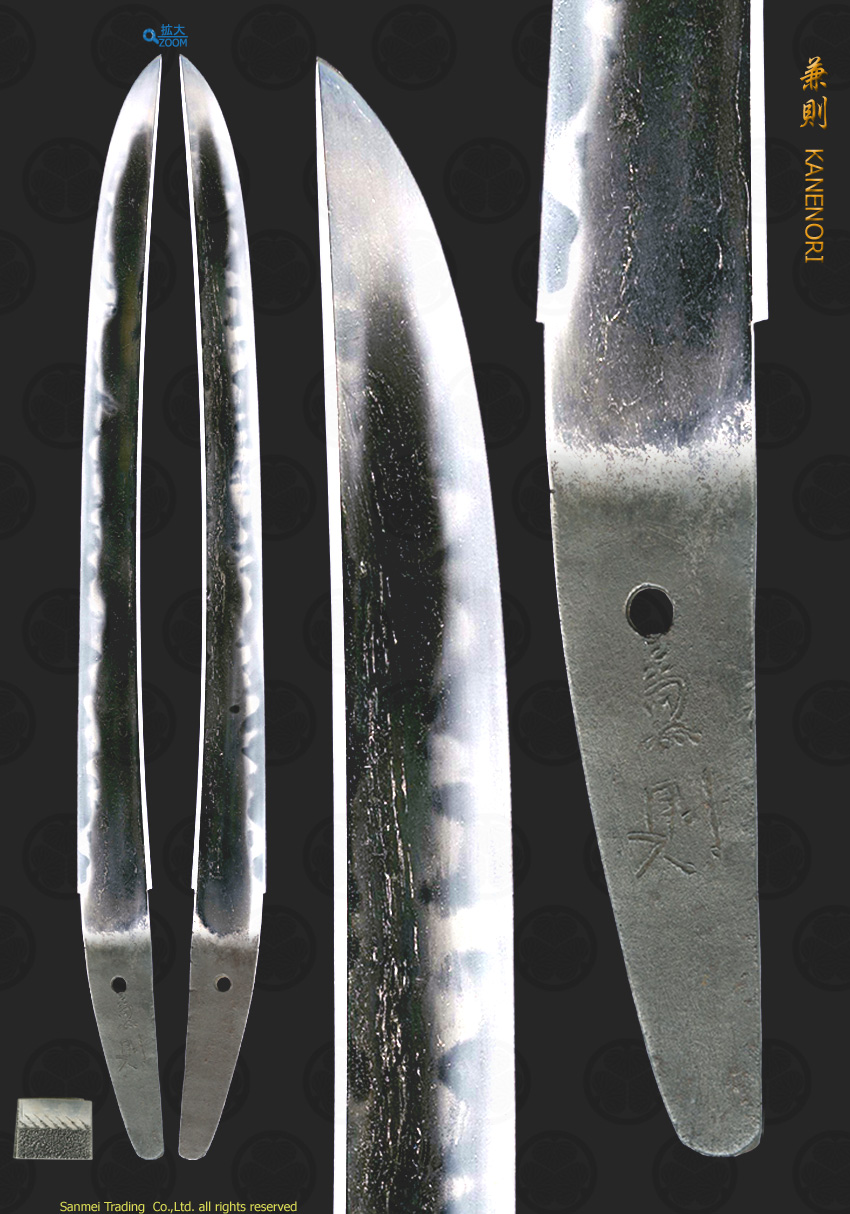Length of cutting edge 32.1cm Curvature 0.7cm Width of base 28.4mm Thickness of base 6.3mm
Forging pattern (kitae hada) : Kitae hada is outstanding Itame mixing with flowing Masame-hada ware mostly appears along both back ridge of Mune and quenching temper area. The surface is covered in Ji-nie hard metal granules over the surface with abundant Chikei darkish gleaming lines activity. Speckled sparkling reflection so called Yubashiri isolated temper area appears on base.
Tempering pattern (hamon) : Quenching line is covered with a bit on stronger side of Nie. Foggy Nioi granules is perceived in the interior of temper where abundant Nie-Ashi and floating YOU also expansive long lines of NieSunagashi are clearly perceived.
Flamboyant HITATSURA hamon consists of undulating Choji-ha, small Togari-ha, Notch of an arrow shape Gunome, splashed Tobiyaki and Muneyaki along back ridge.
Temper of tip (boshi) : Temper of tip becomes stronger the Nie granules, brighter the Nioi, forms an irregular lines and turns back deeply that connects to Muneyaki.
Tang (Nakago) : Nakago is relatively short in ship bottom shape. U-shaped Kurijiri bottom shape. Nakago is UBU that holds slight curve, unaltered. Crossing Higaki file marks. One retaining hole of Mekugi-ana. The classical signature is inscribed in front 2 character KANENORI 兼則.
KANENORI 兼則 whose founder is Naoe-shizu 直江志津 school in Nanboucho period had played major role of San-ami school 三阿弥派. Some of them had moved their workshop to Echizen, E'chu, Owari or Shinshu domain like the other makers in Seki started to live in major castle towns during end Muromachi early Edo period.
KANENORI 兼則 made the great rumor being spread as supreme sharp cutting performance to meet with increasing demands from brave Samurai.
Well harmonized curve was designed for fast draw, Hirazukuri-construction was working well for Cut and Thrust through the openings of armor or helmet, Itame forging ware of functional mixture with hard and soft steel was designed for durable construction, Hitatsura quenching method was carefully designed for the most supreme sharp performance and Muneyaki was aimed for defending against hard hitting.
This prominent powerful tanto had been deeply admired for the supreme sharp performance of the risen Mino-den bearing legitimate Sōshu technique and even now it still remains very good condition over the passage of almost 500 years abounding with archaic charm and classical beauty.
Single layer silver Habaki collar, preserved in a Shira-saya plain wood mounting.
Good old polish/Condition scale: very good (using a scale of mint-excellent-very good-good-fair-poor)
reference data :
Honma Kunzan/Ishii Masakuni, Nihonto meikan, Yuzankaku, 1975
Sugiura Yoshiyuki/Suzuki Takuo, Muromachi-ki Mino-toko no Kenkyu Ribun shuppan, 2006


